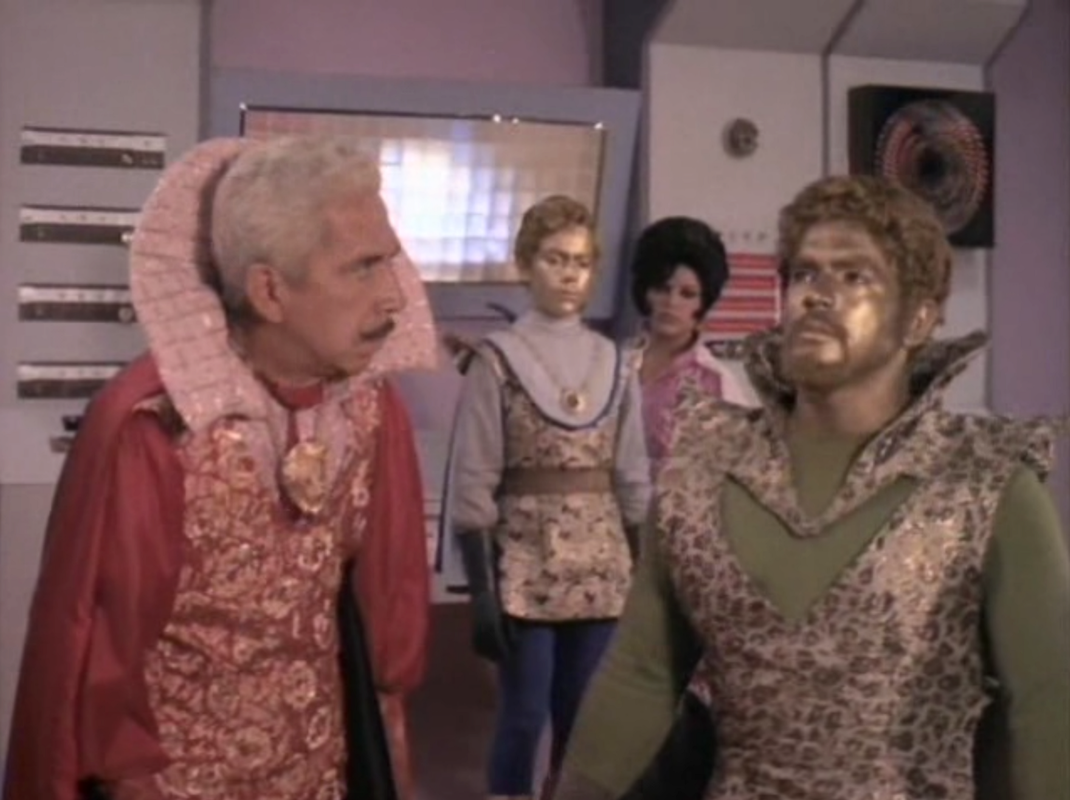
As an American, I live in a place where almost nothing predates the 1600 hundreds. American history is above all short. Chicago, the city where I live, was first built in 1833 and rebuilt anew in 1871 after the great fire. When I look out my window nothing is more than 150 years old
The city of Memphis in Egypt was founded in 2925 BCE. During the 4000 years of the Egyptian Empire, the Pharos saw the rise and fall of Ancient Greece. The Egyptians not only predated The Indus Vally Kings and Babylon but they outlasted them as well. The Etruscans, The Olmecs, The Hittites, The Maori all came and went while Egypt continued on.
The Night of Counting the Years, written and directed by Chadi Abdel Salam, grapples with how to relate to this history. The film is based on true events concerning the apprehension of a desert tribe in Egypt who were raiding the ancient tombs of the pharos for profit, but this premise and as well as the plot are incidental. They are just a means of creating an arena where issues of identity, history, heritage, and family can be examined.
The Night of Counting the Years takes place in 1881, just before the British colonize Egypt. The film unfolds in an elemental plain where only sand, sky, water, and stone ruins exist. We never see green, we never see modernity, we never see anything other than the bare minimum of existence.

The characters are surrounded by the stone feet of giants. The tribespeople and the investigators from the city are all continuously dwarfed both literally and figuratively by the tangible history surrounding them. Everything about contemporary human existence is outshone by a mythological and epic scale past.

The fact that Ancient Egypt is in ruins adds another layer to this comparison. The admiration the monuments inspire is tempered by the question “What hope does modern society have if the Egyptian civilization that produced such awe-inspiring structures eventually came to ruin?”
Wannis, the son of the head of the criminal tribe converses with a stranger as they walk through the ruins. The stranger, referring to an enormous group of statues comments,
The Stranger: “They have no face.”
Wannis: “True.”
Stranger: “But there’s a face as big as a man.” (pointing to a face that has fallen on the ground.)
…
Wannis: “Don’t they frighten you sometimes?”
Stranger: They were my childhood companions. My Brother and I used to hide among them.”
Wannis: “This palm is closed around its destiny, which will never be heard.” (observing a giant stone fist.)
Stranger: “What destiny can be read in a palm of stone?”
Wannis: “The destiny of those who built these palaces and these images. Men who walk toward nothing. Ships that sail toward nothing. Pillars that hold up no roof.”
The movie asks over and over, of what value are these ruins? Should they be measured in monetary terms? Are they valuable because the tribe can live off selling them to unscrupulous dealers? Are they valuable because they are a source of identity for the people and the country who can see their ancestor’s in them? Are they of no value at all, but simply evidence that man’s greatest plans come to nothing and are eventually swallowed up by the sands? If the British tear them apart and drag them back to English museums what does that mean for Egypt? What have the British taken?
In a tense scene, the tribal elders initiate Wannis into the traditions and secrets of the tribe by revealing to him the hidden tombs. Wannis watches while his elders ruthlessly tear apart and decapitate a mummy in order to steal its golden necklace. When Wannis protests the elders present an argument that reoccurs several times in the film. They rationalize that the mummies have no one to remember them. Their fathers and sons are nameless “dust.” The logic being that these golden artifacts no longer belong to anyone, and no longer serve their original purpose.

The nature and value of these objects, and through them the history they represent, comes to a head when a prostitute is caught being paid with a small marble statue. When asked what she was doing she asks “Aren’t I better than a piece of gold?” She has just finished exchanging her flesh and blood body for a small marble body. How do these two things balance on a scale? Of what value is either one? If selling her body degrades her then does selling Egypt’s history degrade the country? Sex with her body is fleeting. Her body itself is fleeting, but the marble will last centuries.
Her prostitution is overseen by Mourad, a male merchant, so the exchange is not really hers to make. The economic alienation of her body is entangled with the alienation of her identity and her people’s identity as Egyptians. She sells her body for a piece of her own history, which she herself does not value other than for its ability to get her, or her pimp money.
When Wannis reproaches her he asks. “What’s Going on here? And for whom?” The second question hangs in the air unanswered, unanswerable. The film tangles with these questions but does not resolve them.

Calling Mourad a pimp is an oversimplification. The prostitution of this one woman is not his main identity. He is a merchant, a middle man, a fixer, a low-level, morally grey survivor who plots and schemes his way through the treacherous machinations going on all around him. Mourad is the future of the new colonized Egypt. He can not fight the imperialism of The British Empire so he must find a way to game the system. He cannot play by the rules or he will be completely subjected and left poor and helpless, but if he is sly and negotiates in both the legitimate and black markets he can eke out a living for himself. Any thought of fighting the system, or finding justice is secondary to survival.
In the end, the various sarcophagi are lifted out of the deep tomb where they have rested for 1000s of years. The dramatic image of seeing them emerge from the ground and be carried across the desert provides a vision of not only resurrection but to a return to glory. The pharos seem to return triumphant, but who is the ultimate winner in this race? Who will define Egypt? It is The Egyptian Antiquities Service who banishes the bandits and saves the treasure, but what right do they have to do so?
The Egyptian museum becomes the ultimate arbiter of justice in The Night of Counting the Years. Of course, the British will soon move in and pillage the ruins for their own museums. Is there a difference? The Egyptian government doesn’t trust its people to preserve the treasures and so they lock them up in a palatial building. England doesn’t trust Egypt to preserve the ruins and so they do the same. Wannis’ question to the prostitute remerges, “What’s Going on here? And for whom?”
The last moment of the film, the screen goes black and text appears that reads, “Rise for you shall not perish. You have been called by your name. You have been resurrected.” Even here it is not clear who the film is addressing, the Pharos, the Egyptian people, or the abstract concept of Egypt the country.

As an epilogue I have provided two photographs I found in National Geographic. I stumbled across them when researching this article. They were taken by Kenneth Garrett at the famous exhibition of Tutankhamun. The first image with the soldiers seems an appropriate illustration for the issues addressed in this article, but it is the second image that seems to reflect something about ephemerality. We are what come and go, the artifacts are what remain unchanged.

If you enjoyed this article click here for more
www.filmofileshideout.com/archives/the-role-of-the-environment-in-onibaba-and-woman-in-the-dunes



